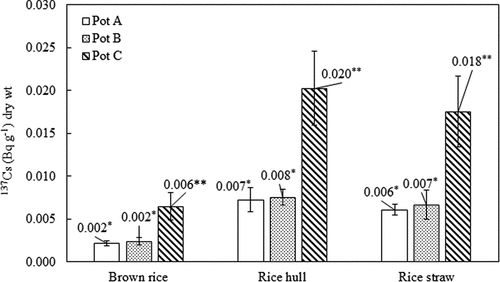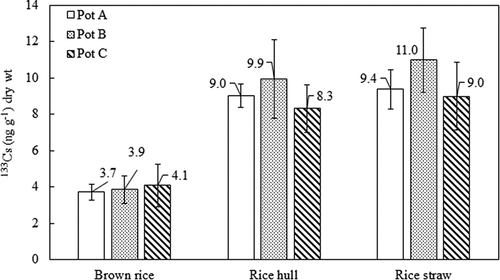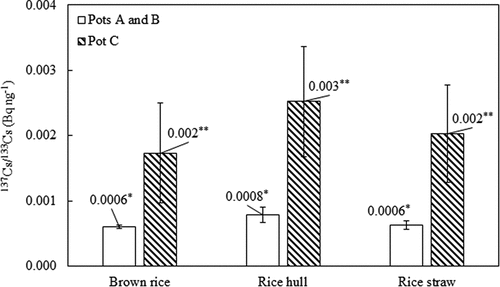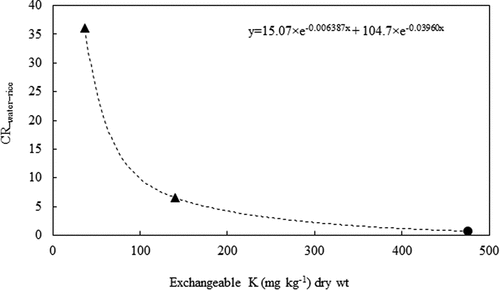Figures & data
Table 1. Physical and chemical properties of the soils in the pot experiment (mean ± sd, n = 3)
Table 2. The concentrations of 137Cs and 133Cs in soils, as well as the exchangeable fraction of soils in the pot experiment (mean ± sd, n = 3)
Table 3. The concentrations of cations, 137Cs, and 133Cs in water supplied to the pots
Table 4. Total dry mass, transfer factors of 137Cs from soils to brown rice (pots A and B) and transfer parameters of 137Cs from water to brown rice (mean ± sd, n = 3, except TFsoils-rice: mean ± sd, n = 6)
Figure 1. Activity concentrations of 137Cs in rice components. The standard deviation (n = 3) is represented by the vertical lines. The symbols (?, ??) indicate the significant differences in the activity concentrations of 137Cs in rice components between pots A, B, and pot C (P < 0.05).

Figure 2. Concentrations of 133Cs in rice components. The standard deviation (n = 3) is represented by the vertical lines.

Figure 3. The ratios of 137Cs/133Cs in rice components. The standard deviation is represented by the vertical lines. The symbols (?, ??) indicate the significant differences in the ratios of 137Cs/133Cs in rice components between pots A, B (n = 6), and pot C (n = 3) (P < 0.05).

Figure 4. The relationship between the CR−water-rice parameter and exchangeable K in soils. The K content in fertilizer was also included in the exchangeable K in our study. The triangles represent the CR−water-rice parameters calculated from the data of Suzuki et al. (Citation2015). The circle represents the CR−water-rice parameter in this study.

Figure 5. The activity concentration of 137Cs in soils collected from pot C after harvesting rice. The standard deviation (n = 3) is represented by the vertical lines. The symbols (?, ??) indicate the significant differences in the activity concentration of 137Cs between the 0-1 cm soil layer and the underneath soil layers.

Table 5. The concentrations of 137Cs, 133Cs, and other cations in irrigation water that was collected from Minamisoma, Fukushima
Table 6. The concentrations of 137Cs and 133Cs in soils, the exchangeable fraction of soils, and brown rice that was collected from Minamisoma, Fukushima (mean ± sd, n = 3)
